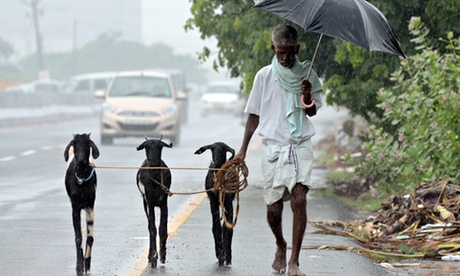Rapid urbanisation across India poses a new set of challenge for the country's cities. With few blueprints in place to handle the explosive growth, ad hoc urban planning has dominated. Nowhere is this more apparent than in urban public transport.
Inadequate public systems force millions of daily commuters in cities like Chennai – commercial capital of south India – to inch for room in overcrowded busses and trains. Chennai's busses carry 30% more passengers every day than the international average. More and more affluent commuters abandon the system and take to their own vehicles. Tamil Nadu, Chennai's home state, has seen a 95% increase in car ownership in the past decade. Short-sighted solutions tend to focus on bridges, flyovers and roads to ease congestion. The trend disproportionately impacts the health and safety of the poor who primarily walk or use public transport. A study in Mumbai found that overall, 44% of the city walks to work, though among the poor, that number jumps to 63%. Still, the ever-expanding number of cars has brought major complications beyond traffic jams: extremely poor air quality and a spike in road accidents has put vulnerable communities – those who often live and work on the roadsides – at greatest risk.
The southern coastal city of Chennai is a testament to these unsustainable car-centric choices, but it has set out to right its wrongs. In an unprecedented move, 15 key urban departments came together in 2010 to form a central decision-making body, the Chennai Unified Metropolitan Transport Authority (Cumta), to reroute the city on a path to sustainable, integrated transport. Their goal is ambitious: to focus on cycling, walking and rapid bus transit in an increasingly car-loving country.
"If you speak to people, there is a sea change in attitude. Everyone is talking about how to create better facilities for pedestrians and improving public transport," says Shreya Gadepalli, director of the Institute for Transportation & Development Policy (ITDP) , an international organisation that has stepped in to catalyse and expand Cumta's efforts. She says it has been inspiring to watch Chennai's municipal engineers, many of them who came sceptically to the initiative, act as evangelists for making India's urban areas more pedestrian friendly. Chennai's new approach hopes to provide new, safer transport linkages for poor communities.
A study last year found that on average, Chennai residents commute 72 minutes each way. The poor, many of whom have been resettled to outskirt areas of the city, often have the longest commutes and the fewest transport options.
Important steps have been made by Chennai's top officials to reclaim road space for pedestrians where there was little or none in the past. Footpaths have been expanded and carriageways narrowed in 40 locations around the city. That number will jump to 70 soon and 400 by next year. "Every street where a bus plies will have a new sidewalk," says Gadepalli, recognising that the most marginalised communities will significantly benefit from these additions.
Rishi Aggarwal, founder of the Walking Project in Mumbai, is encouraged by what is happening in Chennai, but he's also cautious until he hears from those on the ground – the ultimate jury, Chennai's pedestrians. "We definitely need some cities to emerge as models of excellence creating inspiration and embarrassment for other cities," he says.
A large-scale cycle network is also part of the plan. The main cycle path will take advantage of Chennai's seaside location, stretching for miles up the coast with connecting points to many neighbourhoods, slum areas and the metro stations along the way. The focus on cycling will not only be good for the environment, but usher in a more inclusive focus to city planning since the poor are already the majority of those cycling in urban India. The Hindu, a leading English language Indian daily, says that the car-centric transport initiatives have been pushing bicycles off the road, "forcing the poor who use them most to spend more and more on transport."

Tenders have also been sent out for a cycle sharing programme. Cycle Chalao, one of India's first cycle sharing initiatives which piloted in Mumbai in 2010 and moved to Pune thereafter, set out initially to charge a minimal monthly amount $3-4 but in the end, the Pune Municipal Corporation decided to underwrite the programme to offer it as a free service. Chennai will need to make similar concessions to ensure the programme is available to all.
The message Chennai is sending out is an important one in India. With urbanisation overwhelming cities, a state of paralysis has ensued. More common than fixing the current situation in cities is building smaller satellite cities. But, as Gadepalli emphasises, there is a way to untangle the mess, and Chennai officials hope to showcase the possibilities forward. In five years, she sees Chennai as a significantly different city. The changes have the potential to bring economic growth and improve air quality. Most importantly, however, widespread integrated public transport shifts the city's focus to the poor, and in bringing about changes for the most marginalised, has the potential to bring about a more equitable city for everyone.
Join the community of global development professionals and experts. Become a GDPN member to get more stories like this direct to your inbox







